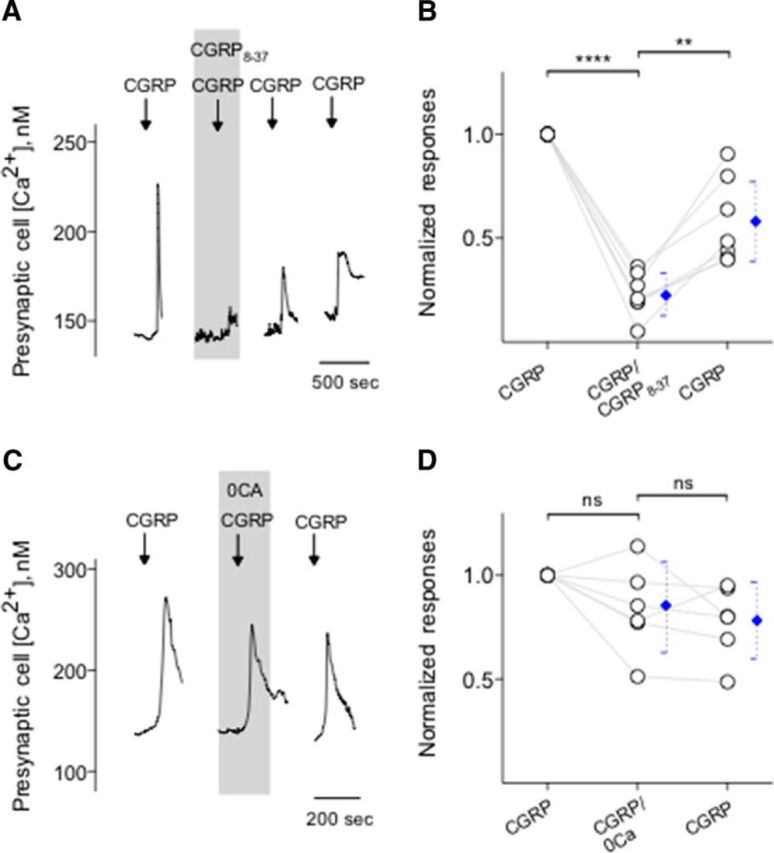Figure 4.

CGRP stimulates its receptors on Presynaptic (Type III) cells and induces Ca2+ release from intracellular stores. A, Presynaptic (Type III) cells were initially stimulated with KCl (50 mm) to verify their identity (data not shown). Bath application of CGRP (0.1 μm) elicits Ca2+ mobilization in the taste cells (↓, CGRP). CGRP-induced Ca2+ responses were reversibly inhibited by CGRP8-37 (0.2 μm), a CGRP receptor antagonist (present throughout the shaded area). B, Summary of CGRP-elicited Ca2+ responses before, during, and after the presence of CGRP8-37. Points indicate normalized peak taste cell responses. Blue symbols represent mean ± 95% CI. **p < 0.01, ****p < 0.0001 (paired Student's t test). N = 7. C, CGRP-elicited Ca2+ mobilization in an isolated Presynaptic (Type III) cell, identified by its responses to KCl, but not taste, was not affected when Ca2+ was eliminated from the bathing solution (0 Ca, present throughout the shaded area). These findings indicated that CGRP-elicited responses in Presynaptic (Type III) cells were generated by release of the intracellular Ca2+, consistent with the excitation of GPCR. D, Summary of experiments testing sources of CGRP-elicited Ca2+ mobilization, plotted as in C. ns, Not significant (paired Student's t test). N = 6.
